Why Protect Land?
Several years ago, Clifftop adopted the motto “Local faces protecting great places.” But what is a “great place?” To some, it is their backyard, a public park or grandpa’s pond. However, the great places referenced in our motto have more to do with our natural heritage, preserving and protecting it for future generations. In the Oxford English Dictionary, natural heritage is defined as the world’s natural resources as handed down to the present generation; specifically, the earth’s outstanding physical, biological and geological formations, and habitats of threatened species of animals and plants and areas with scientific, conservation or aesthetic value.
Late in 2010, Clifftop first ventured into land protection by partnering with the Southwestern Illinois Resource Conservation and Development (SWIRC&D), now HeartLands Conservancy, to purchase the White Rock lands. Clifftop and the SWIRC&D crafted a joint venture agreement – the first such agreement in Illinois – to seek funding for the purchase, jointly own, hold and steward the tract.
Three hundred six acres were dedicated as a Nature Preserve and 160 acres were registered as a Land and Water Reserve in mid-2011. White Rock Nature Preserve opened to the public for passive recreation with an approximately 2 mile trail system in October 2011.
This acquisition was followed by our purchase in July 2012 of the Mill Creek Natural Area, a geologic gem, in southern Randolph County. This site was eventually sold to the Illinois Department of Natural Resources in 2019. Late in 2013, we acquired what became the Paul Wightman Subterranean Nature Preserve (PWSNP), the surface of which overlays the Fogelpole cave system, Illinois’ largest and most diverse. Most recently, we announced our acquisition of the Storment-Hauss Nature Preserve just one-half mile east of PWSNP.
The history of Clifftop acquisitions, however, doesn’t answer the “Why?” question. For that we must examine the unique inhabitants and features of each acquisition.
White Rock Nature Preserve is home to populations of the state-threatened Missouri coneflower (Rudbeckia missouriensis) and the state-endangered woolly buckthorn (Bumelia lanuginosa). Another state-threatened species, bluehearts (Buchnera americana), is located on neighboring property on a prairie that runs contiguous with White Rock. While bluehearts have not been seen on the White Rock portion of the prairie, suitable habitat exists.
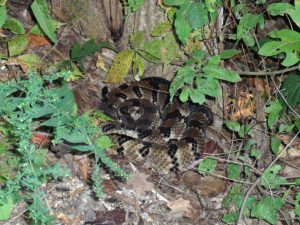
One state-threatened snake species, the timber rattlesnake (Crotalus horridus) has been documented in the preserve. The state-threatened flathead snake (Tantillia gracilis), the state-endangered Great Plains rat snake (Elaphe emoryi) and the state- threatened, common striped or “Plains” scorpion (Centruroides vittatus) likely inhabit the preserve, based on favorable habitat conditions and specimens of these species having been documented adjacent to or near the preserve. The state-threatened cerulean warbler (Dendroica cerulean) has been documented on the site during breeding season. Finally, the site includes breeding habitat for the federally-listed Indiana bat (Myotis sodalis).
The preserve is also home to two unusual, rare and declining habitats in the state. White Rock sustains about seven acres of loess hill prairies and five acres of xeric limestone prairies, also known as limestone glades.
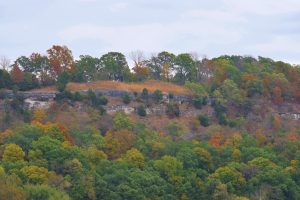
Loess hill prairies occur along the tops and very edges of southwest-facing Mississippi and Illinois River bluff cliff faces. Because of the powdery loess soils and extremely dry, sunny and windy conditions on these cliff edges, prairie grasses and flowers took hold about 9,000 years ago. There are only about 480 acres of hill prairie remaining in our state, and 40% of these acres occur along our bluff corridor, from Dupo to Prairie du Rocher.
Xeric limestone prairies are even rarer, with only 180 acres remaining in Illinois. Monroe County hosts 60% of the state’s total acreage. Xeric limestone prairies can be found deeper in the forests, away from the cliff faces. They have thin and rocky soils, often face southwest, often contain rock ledge systems and also host prairie plants.
Without protection and the stewardship that follows, loss of habitat for threatened and endangered animal and plant species can occur and these rare habitats may simply disappear. The hill prairies, glade areas and woodlands face several natural competitors. Eastern red cedars, rough-leafed dogwoods, sumac and bush honeysuckle consistently try to move into the hill prairies and glades and out-compete the prairie plants. Shade tolerant bush honeysuckle grows profusely in our woodlands, creating shade so dense that oak and hickory seedlings cannot germinate and grow. Our historically hardwood oak-hickory forests will be replaced by shade tolerant species like maple, paw-paw and sassafras without the intervention of humans.
Historically, several factors contributed to keep prairies and glades clear of encroaching woody shrubs and forests dominated by hardwoods. We know from fire scar studies on trees that lightning-produced fires ran through the bluffs every 20 years or so. Native Americans revered the lofty bluffs as lookouts and burial sites and often set fires to keep the areas open. We know from bones found along cliff talus slopes that elk, bison, deer, and, more recently cattle, often grazed through the prairies and helped keep woody shrubs at bay. And, we know that up to the 1950s and the advent of overly zealous “Smokey Bear” campaigns that essentially eliminated fire from the landscape, that local landowners periodically torched the prairies. When the fires and grazing stopped, shrubs began to take over.
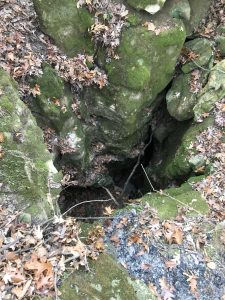
The surface of the 535-acre Paul Wightman Subterranean Nature Preserve was being marketed for sale as a subdivision of small “farmettes” which would have allowed owners to keep livestock when Clifftop stepped in to purchase. With hundreds of sinkholes on the property, the keeping of livestock and installation of septic systems in addition to herbicide and fertilizer runoff would have virtually guaranteed contamination of the groundwater within the Fogelpole Cave System. The cave is a living system that hosts a unique assemblage of fauna dependent upon groundwater and hosts 18 globally rare and 22 state-rare species. It is one of the few sites that continue to host populations of the Illinois Cave Amphipod, a small shrimp-like animal that is known only from Monroe County and found nowhere else on the planet.
In addition, the cave system also hosts a number of bat species. These include the state- and federally-endangered Indiana bat (Myotis sodalis) and gray bat (Myotis grisescens) and the Northern long-eared bat (Myotis septentrionalis), all of which are under dire threat due to White Nose Syndrome, a deadly disease to bats. Indiana bats utilize the Fogelpole Cave system as both a wintering hibernacula and summer maternity roost, while the gray bat has been documented using the cave as a summer habitat, with the bats observed most likely being bachelor colonies.
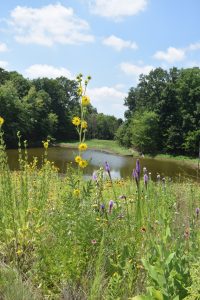
Clifftop’s surface restoration with native grasses and forbs benefits a wide range of faunal species, both subterranean and terrestrial, including numerous Species in Greatest Need of Conservation that otherwise may have disappeared due to contamination or loss of habitat.
The 85-acre Storment-Hauss Nature Preserve includes 64 acres of upland forest and a unique sandstone cliff community. A small creek transverses the property with waterfalls in two separate locations. Over the years, 59 species of birds and 33 herpetofauna species have been documented on the site. The previous owner constructed several small fishless amphibian ponds along the edges of the property to provide breeding habitat for many amphibians.
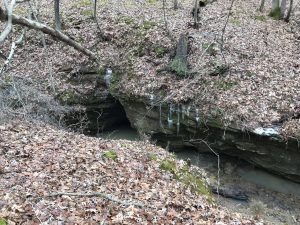
Clifftop’s purchase of this existing nature preserve fulfills the previous owner’s wishes of maintaining the property for the benefit of wildlife conservation.
Why do we protect land? So that future generations will be able to observe and enjoy the plants and animals that have historically inhabited these lands.
CLIFFTOP, a local nonprofit organization, is focused on preserving and protecting area bluff lands.
A version of this article appeared in the November 20, 2020 edition of the Monroe County Independent.
© 2020 all content rights reserved Clifftop NFP
Comments are currently closed.
